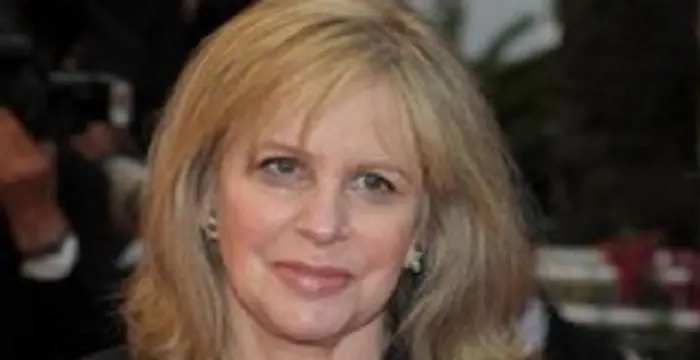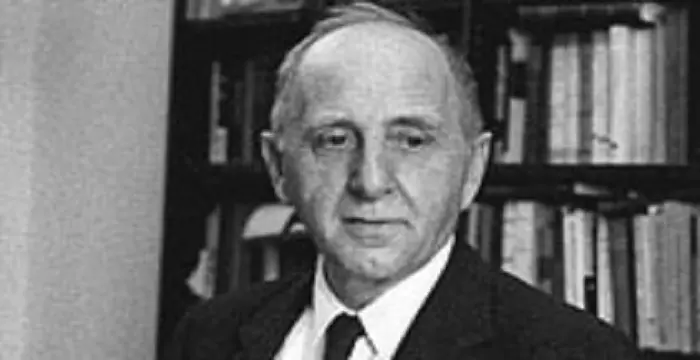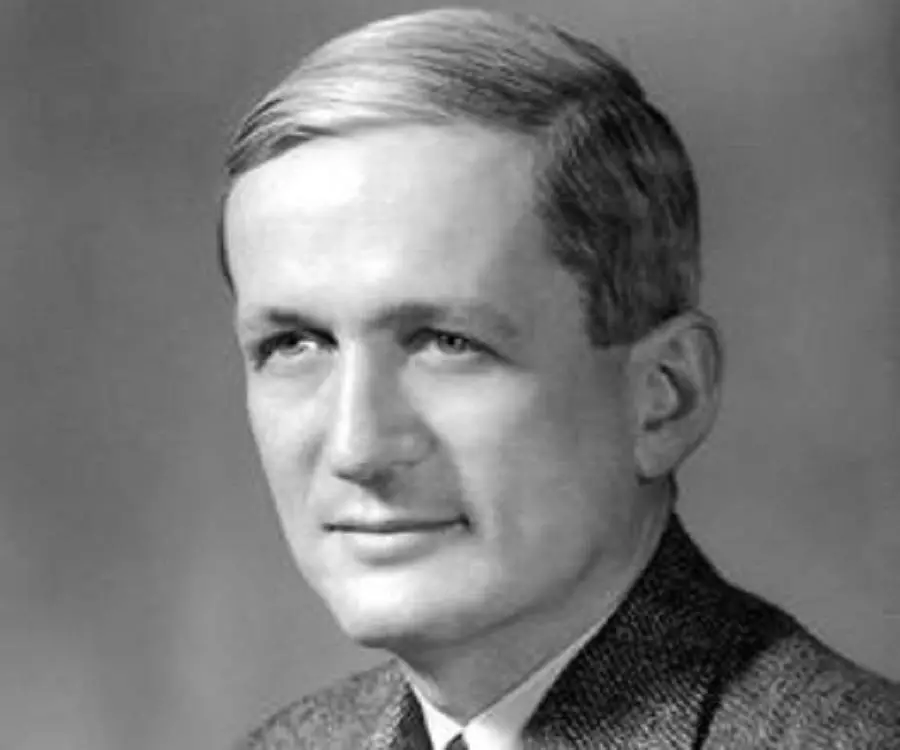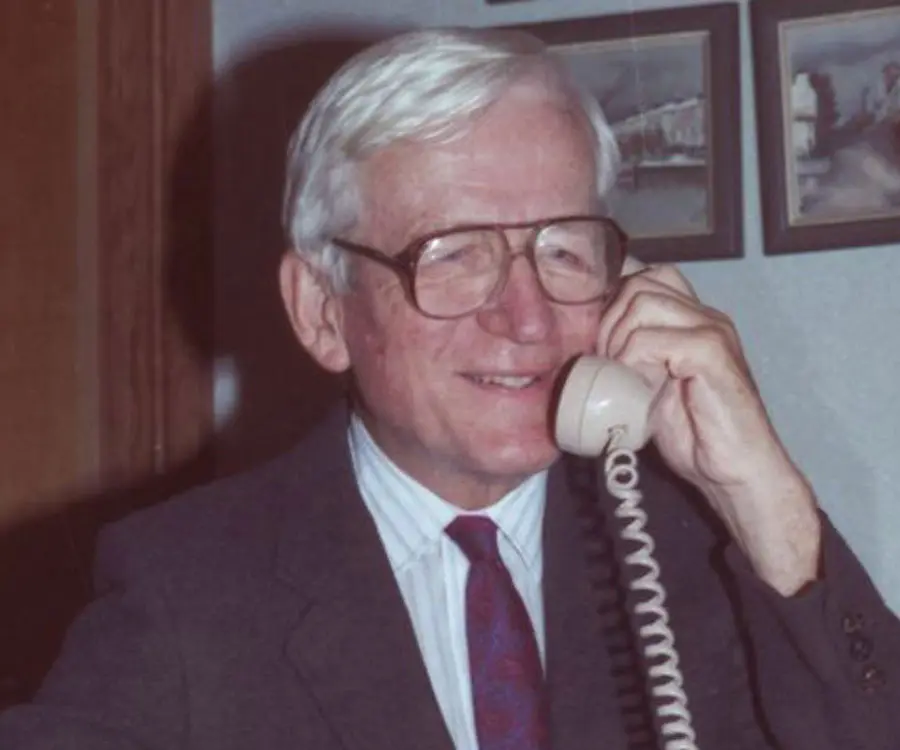
Norman Foster Ramsey Jr. - Physicists, Family and Childhood
Norman Foster Ramsey Jr.'s Personal Details
Norman F
| Information | Detail |
|---|---|
| Birthday | August 27, 1915 |
| Died on | November 4, 2011 |
| Nationality | American |
| Famous | Columbia University, Scientists, Physicists |
| Spouses | Elinor Jameson, Ellie Welch |
| Known as | Norman Ramsey, Norman F. Ramsey Jr. |
| Universities |
|
| Notable Alumnis |
|
| Discoveries / Inventions |
|
| Birth Place | Washington, D.C. |
| Gender | Male |
| Father | Norman Foster Ramsey |
| Mother | Minna Bauer Ramsey |
| Sun Sign | Virgo |
| Born in | Washington, D.C. |
| Famous as | Physicist |
| Died at Age | 96 |
// Famous Columbia University
Helen Morris
Helen Morris is a former book editor, TV producer and the wife of Academy Award winning director Martin Scorsese. Check out this biography to know about her birthday, childhood, family life, achievements and fun facts about her.
Simon Kuznets
Simon Kuznets was a noted Russian-American economist, statistician, demographer, and economic historian. Check out this biography to know about his childhood, family life, achievements and other facts related to his life.
Anna Paquin
Anna Paquin is a Kiwi film, theatre and television actress known for her roles in movies like ‘The Piano’, ‘Fly Away Home’, and ‘X-Men. This biography provides detailed information about her childhood, life, achievements, works & timeline.
Norman Foster Ramsey Jr.'s photo
Who is Norman Foster Ramsey Jr.?
Norman F. Ramsey was a Nobel Prize winning American physicist who developed a precise method to probe the structure of atoms and molecules and used it to devise a remarkably exact way to keep time. He was awarded the 1989 Nobel Prize in Physics, along with Hans G. Dehmelt from University of Washington, for the invention of the separated oscillatory field method, which had important applications in the construction of atomic clocks. Norman Ramsey was a towering figure in the world of physics during the second half of the 20th century. He was admired for his scientific accomplishments, his service as a statesman of science, his role as a teacher and mentor, and the friendships he shared with people of all ranks around the world. His life and career spanned almost a century. The technologies that sprung from his work touch the lives of billions today. Magnetic Resonance Imaging (MRI), a mainstay of medical diagnostics technology, and the Atomic Clock, which makes Global Positioning System (GPS) possible, are among the technologies derived from the experimental techniques that Ramsey developed. A physics professor at Harvard University for most of his career, Ramsey also held several posts with such government and international agencies as NATO and the United States Atomic Energy Commission.
// Famous Physicists
Henry Cavendish
Henry Cavendish was a theoretical chemist and physicist, renowned for discovery of hydrogen and calculation of the mass of earth. To know more about his childhood, profile, timeline and career read on
Walter Kohn
Nobel Laureate Walter Kohn was an Austrian-born American theoretical chemist and physicist. Check out this biography to know about his childhood, life, achievements, works & timeline.
Nikola Tesla
Nikola Tesla was a Serbian-American inventor, best known for his development of alternating current electrical systems. This biography of Nikola Tesla provides detailed information about his childhood, life, achievements, works & timeline.
Childhood & Early Life
Born on August 27, 1915 in Washington, DC, Norman Foster Ramsey Jr. was the son of Norman Foster Ramsey, a West Point educated military officer, and Minna Bauer Ramsey, a mathematics instructor.
Norman’s education was frequently interrupted when the family moved to new locations in the United States and abroad. At 15 he graduated from the Fort Leavenworth, Kansas, high school as class president and at the top of his class.
After his schooling, he entered Columbia University in 1931, graduating at the top of his class, with a bachelor’s degree in mathematics in 1935. This led to a scholarship to attend Cambridge University in England, where he earned a second bachelor’s degree, this time in physics.
During his years at Cambridge, he attended lectures by Ernest Rutherford, Paul Durac, and J.J. Thomson among others and was tutored by Maurice Gold Haber, who later became a close friend and director of Brookhaven National Laboratory.
The lectures at Cambridge, especially Rutherford’s, kindled in Norman an enthusiasm for experimental physics, particularly the study of molecular beams and he applied to do research for Ph.D. under Isidor Isaac Rabi in Columbia.
He received his Ph.D. in physics from Columbia in 1940, and became a fellow at the Carnegie Institution in Washington, D.C., where he studied neutron-proton and proton-helium scattering.
Career
In 1940, Ramsey accepted a teaching position at the University of Illinois at Urbana-Champaign.
During World War II, his research and development efforts on electromagnetic radiation and radar made vital contributions to navigation and to the detection of enemy aircraft and submarines. J. Robert Oppenheimer, who headed the atomic bomb laboratory at Los Alamos during the war, recruited him to work there. In a Nobel autobiographical sketch, Dr. Ramsey wrote that he was chief of “the Delivery Group,” which was responsible for, among other things, the ballistics of the bomb and modifying airplanes to accommodate the bomb.
Ramsey left Los Alamos in October 1945 and resumed his academic career by returning to Columbia as an associate professor of physics. Here, he helped found the Brookhaven Laboratory on January 1, 1947. Ramsey agreed to serve as the head of its physics department, splitting his time with his duties at Columbia.
Norman later joined Harvard in 1947. While working at Harvard he invented the separated oscillatory fields method, also known as the Ramsey method.
His research helped lay the groundwork for nuclear magnetic resonance, whose applications include the M.R.I. technique now widely used for medical diagnosis.
But the most immediate application of the Ramsey method has been in the development of highly accurate atomic clocks. Since 1967 it has been used to define the exact span of a second, not as a fraction of the time it takes Earth to revolve around the Sun, but as 9,192,631,770 radiation cycles of a cesium atom.
In 1960, working with Daniel Kleppner, he invented a different type of atomic clock, known as the hydrogen maser, whose remarkable stability has since been used to confirm the minute effects of gravity on time as predicted by Einstein’s theory of general relativity. Atomic clocks like the hydrogen maser are also used in the ground-based timing systems that track global positioning satellites.
Awards & Achievements
Ramsey was honored by the Nobel committee in 1989 for his work leading to the ultra- precise cesium atomic clock and the hydrogen maser.
In addition to the Nobel Prize, Ramsey received a number of awards such as the Ernest Orlando Lawrence Award in 1960 for his contribution to physics.
He received the Oersted Medal and the National Medal of Science in 1988.
He served as the president of the Universities Research Association during the 1960s and was involved in the design and construction of the Fermilab in Batavia, Illinois.
He served as the president of the American Physical Society in 1978.
He served as the chairman of the board of the American Institute of Physics from 1980 to 1986.
He also headed a 1982 National Research Council committee that concluded, contrary to the findings of the House of Representatives Select Committee on Assassinations, that acoustic evidence did not indicate the presence of a second gunman's involvement in the assassination of President John F. Kennedy.
Personal Life & Legacy
He married Elinor Jameson in 1940 and had four daughters. Elinor succumbed to cancer in 1983.
Later he married Ellie Welch of Brookline, Massachusetts.
Ramsey died on November 4, 2011 and was survived by his wife Ellie, his four daughters from his first marriage, and his stepdaughter and stepson from his second marriage.
// Famous Scientists
Juliane Koepcke
Juliane Koepcke is a German-Peruvian biologist, who was the lone survivor among the 92 passengers and crew of the ill-fated LANSA Flight 508 that crashed in the Peruvian rainforest on 24 December 1971. Know more about her life in this biography.
Henry Cavendish
Henry Cavendish was a theoretical chemist and physicist, renowned for discovery of hydrogen and calculation of the mass of earth. To know more about his childhood, profile, timeline and career read on
Konstantin Tsiolkovsky
Konstantin Tsiolkovsky was a Russian rocket scientist and a pioneer of astronautics. This biography provides detailed information about his childhood, family, personal life, career, achievements, etc.
Norman Foster Ramsey Jr.'s awards
| Year | Name | Award |
|---|---|---|
Other | ||
| 0 | National Medal of Science (1988) | |
| 0 | Nobel Prize in Physics (1989) | |
| 0 | Dirac Medal (1990) Vannevar Bush Award (1995 | |
| 0 | Ernest Orlando Lawrence Award (1960) | |
| 0 | Davisson-Germer Prize (1974) IEEE Medal of Honor (1984) | |
| 0 | Oersted Medal (1988) | |
Norman Foster Ramsey Jr. biography timelines
- // 27th Aug 1915Born on August 27, 1915 in Washington, DC, Norman Foster Ramsey Jr. was the son of Norman Foster Ramsey, a West Point educated military officer, and Minna Bauer Ramsey, a mathematics instructor.
- // 1931 To 1935After his schooling, he entered Columbia University in 1931, graduating at the top of his class, with a bachelor’s degree in mathematics in 1935. This led to a scholarship to attend Cambridge University in England, where he earned a second bachelor’s degree, this time in physics.
- // 1940He received his Ph.D. in physics from Columbia in 1940, and became a fellow at the Carnegie Institution in Washington, D.C., where he studied neutron-proton and proton-helium scattering.
- // 1940In 1940, Ramsey accepted a teaching position at the University of Illinois at Urbana-Champaign.
- // 1940 To 1983He married Elinor Jameson in 1940 and had four daughters. Elinor succumbed to cancer in 1983.
- // Oct 1945 To 1st Jan 1947Ramsey left Los Alamos in October 1945 and resumed his academic career by returning to Columbia as an associate professor of physics. Here, he helped found the Brookhaven Laboratory on January 1, 1947. Ramsey agreed to serve as the head of its physics department, splitting his time with his duties at Columbia.
- // 1947Norman later joined Harvard in 1947. While working at Harvard he invented the separated oscillatory fields method, also known as the Ramsey method.
- // 1960In 1960, working with Daniel Kleppner, he invented a different type of atomic clock, known as the hydrogen maser, whose remarkable stability has since been used to confirm the minute effects of gravity on time as predicted by Einstein’s theory of general relativity. Atomic clocks like the hydrogen maser are also used in the ground-based timing systems that track global positioning satellites.
- // 1960In addition to the Nobel Prize, Ramsey received a number of awards such as the Ernest Orlando Lawrence Award in 1960 for his contribution to physics.
- // 1967But the most immediate application of the Ramsey method has been in the development of highly accurate atomic clocks. Since 1967 it has been used to define the exact span of a second, not as a fraction of the time it takes Earth to revolve around the Sun, but as 9,192,631,770 radiation cycles of a cesium atom.
- // 1978He served as the president of the American Physical Society in 1978.
- // 1980 To 1986He served as the chairman of the board of the American Institute of Physics from 1980 to 1986.
- // 1982He also headed a 1982 National Research Council committee that concluded, contrary to the findings of the House of Representatives Select Committee on Assassinations, that acoustic evidence did not indicate the presence of a second gunman's involvement in the assassination of President John F. Kennedy.
- // 1988He received the Oersted Medal and the National Medal of Science in 1988.
- // 1989Ramsey was honored by the Nobel committee in 1989 for his work leading to the ultra- precise cesium atomic clock and the hydrogen maser.
- // 4th Nov 2011Ramsey died on November 4, 2011 and was survived by his wife Ellie, his four daughters from his first marriage, and his stepdaughter and stepson from his second marriage.
// Famous American peoples
Wentworth Miller
Wentworth Miller is an American actor and screenwriter who achieved recognition for his role in the TV series ‘Prison Break’.
Jason Simpson
Jason Simpson is the son of former NFL running back, broadcaster and actor O. J. Simpson. Check out this biography to know about his childhood, family, life, and little known facts about him.
Melissa Brim
Melissa Brim is the ex-girlfriend of former professional boxer Floyd Mayweather Jr. Check out this biography to know about her birthday, childhood, family life, achievements and fun facts about her.
Skai Jackson
Skai Jackson is an American child actress with huge fan following. Find more about her family & personal life, relationships, facts and more.
Joyce Meyer
Joyce Meyer is a Christian author and speaker. This biography provides detailed information about her childhood, life, achievements, works & timeline
Zoe LaVerne
Zoe LaVerne is an American musical.ly star. Check out this biography to know more about her family, personal life, including her age, birthday, etc.
Norman Foster Ramsey Jr.'s FAQ
What is Norman Foster Ramsey Jr. birthday?
Norman Foster Ramsey Jr. was born at 1915-08-27
When was Norman Foster Ramsey Jr. died?
Norman Foster Ramsey Jr. was died at 2011-11-04
Where was Norman Foster Ramsey Jr. died?
Norman Foster Ramsey Jr. was died in Wayland, Massachusetts
Which age was Norman Foster Ramsey Jr. died?
Norman Foster Ramsey Jr. was died at age 96
Where is Norman Foster Ramsey Jr.'s birth place?
Norman Foster Ramsey Jr. was born in Washington, D.C.
What is Norman Foster Ramsey Jr. nationalities?
Norman Foster Ramsey Jr.'s nationalities is American
Who is Norman Foster Ramsey Jr. spouses?
Norman Foster Ramsey Jr.'s spouses is Elinor Jameson, Ellie Welch
What was Norman Foster Ramsey Jr. universities?
Norman Foster Ramsey Jr. studied at Columbia University, 1940 - Columbia University, University of Cambridge
What was Norman Foster Ramsey Jr. notable alumnis?
Norman Foster Ramsey Jr.'s notable alumnis is Columbia University
What is Norman Foster Ramsey Jr.'s inventions/discoveries?
Separated Oscillatory Field Method was invented (or discovered) by Norman Foster Ramsey Jr.
Who is Norman Foster Ramsey Jr.'s father?
Norman Foster Ramsey Jr.'s father is Norman Foster Ramsey
Who is Norman Foster Ramsey Jr.'s mother?
Norman Foster Ramsey Jr.'s mother is Minna Bauer Ramsey
What is Norman Foster Ramsey Jr.'s sun sign?
Norman Foster Ramsey Jr. is Virgo
How famous is Norman Foster Ramsey Jr.?
Norman Foster Ramsey Jr. is famouse as Physicist















